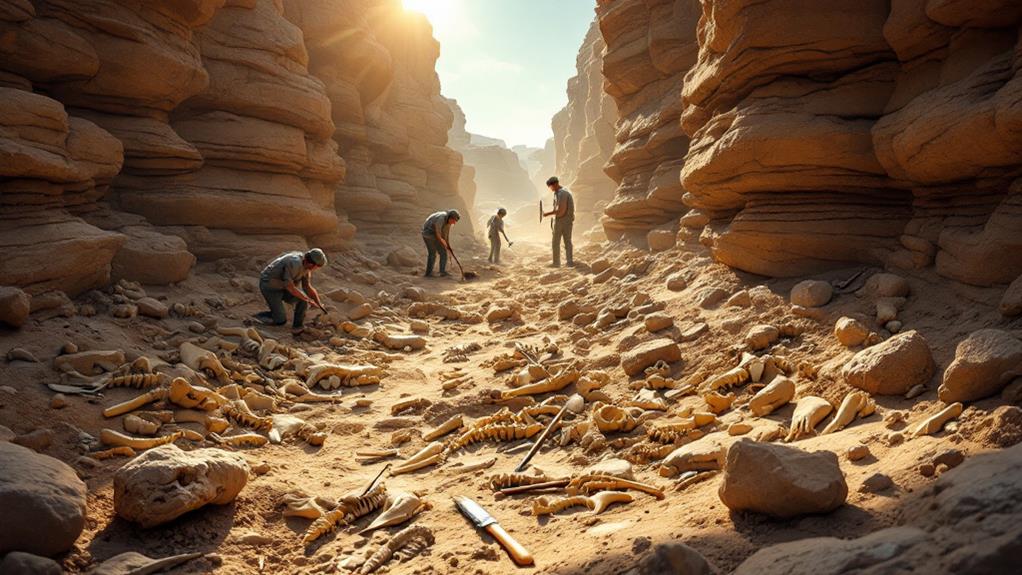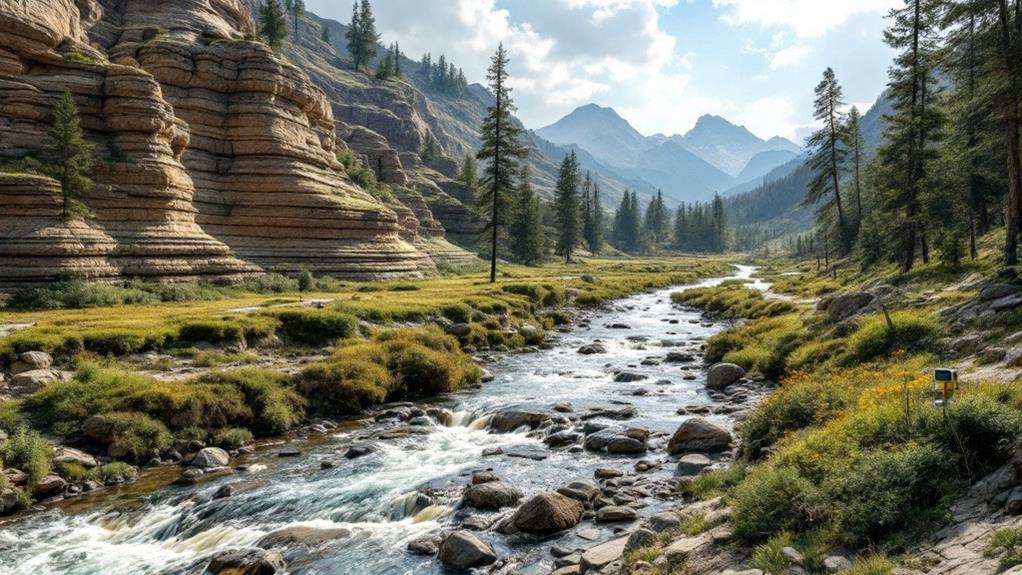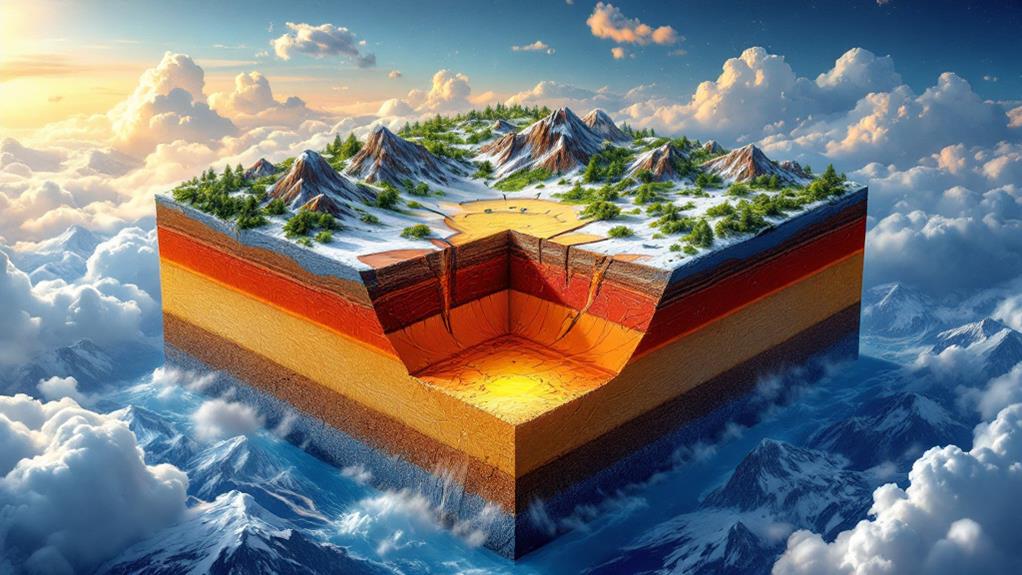The History of Geology: Exploring the Layers of the Earth
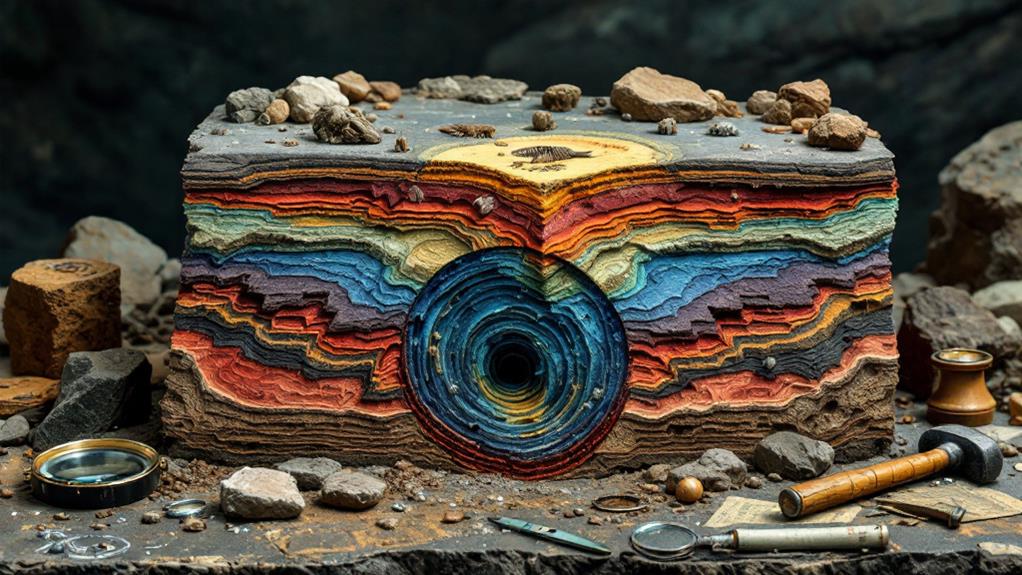
The history of geology is an expedition from ancient myths to modern scientific understanding. You'll uncover how early civilizations explained Earth's formation through mythology, and how the Age of Enlightenment shifted focus to empirical observations. You'll learn about the debate between catastrophism and uniformitarianism, which transformed geological thinking. Stratigraphy and fossil records revealed Earth's deep history, while plate tectonics revolutionized our understanding of Earth's dynamics. Today, advanced technologies like remote sensing and 3D modeling continue to unveil Earth's secrets. As you peel back the layers of geological history, you'll uncover a world of scientific breakthroughs and changing theories.
Ancient Views on Earth's Formation
While our modern understanding of geology is relatively recent, ancient civilizations had their own theories about Earth's formation. You'll find that many early cultures developed mythological explanations to make sense of the world around them. These stories often involved deities or supernatural forces shaping the Earth's surface.
In ancient Greece, you'd encounter cyclical earth models, where philosophers believed the world underwent repeated cycles of destruction and renewal. Aristotle proposed that the Earth was eternal, with slow changes occurring over vast periods. Meanwhile, in ancient China, you'd discover the concept of Yin and Yang, which explained geological processes as a balance between opposing forces.
Ancient Egyptians viewed the Earth as emerging from a primordial ocean, while Mesopotamian cultures believed it was formed from the body of a slain goddess. In the Americas, you'd find creation myths involving sky gods and earth goddesses. These diverse beliefs reflect humanity's early attempts to comprehend our planet's origins. Although lacking scientific basis, these ancient views laid the groundwork for future geological inquiry and our quest to explore Earth's mysteries.
The Age of Enlightenment
During the Age of Enlightenment, you'll see a significant shift in how people approached geological questions. This era, spanning the 17th and 18th centuries, coincided with the scientific revolution and marked a turning point in geological understanding. You'll find that scholars began to rely more on empirical observations and logical reasoning, moving away from purely theological explanations of Earth's formation.
Key figures like James Hutton and Nicolas Steno made pioneering contributions to the field. They introduced concepts that are still fundamental to modern geology:
- Uniformitarianism: The idea that geological processes observed today have operated consistently throughout Earth's history.
- Superposition: The principle that in undisturbed rock layers, the oldest layers are at the bottom.
- Original horizontality: The concept that sedimentary rocks are initially deposited in horizontal layers.
You'll notice that these ideas challenged the prevailing notion of a young Earth and laid the groundwork for understanding deep time. The Age of Enlightenment set the stage for geology to emerge as a distinct scientific discipline, establishing the foundation for future discoveries about Earth's age and formation processes.
Catastrophism vs. Uniformitarianism
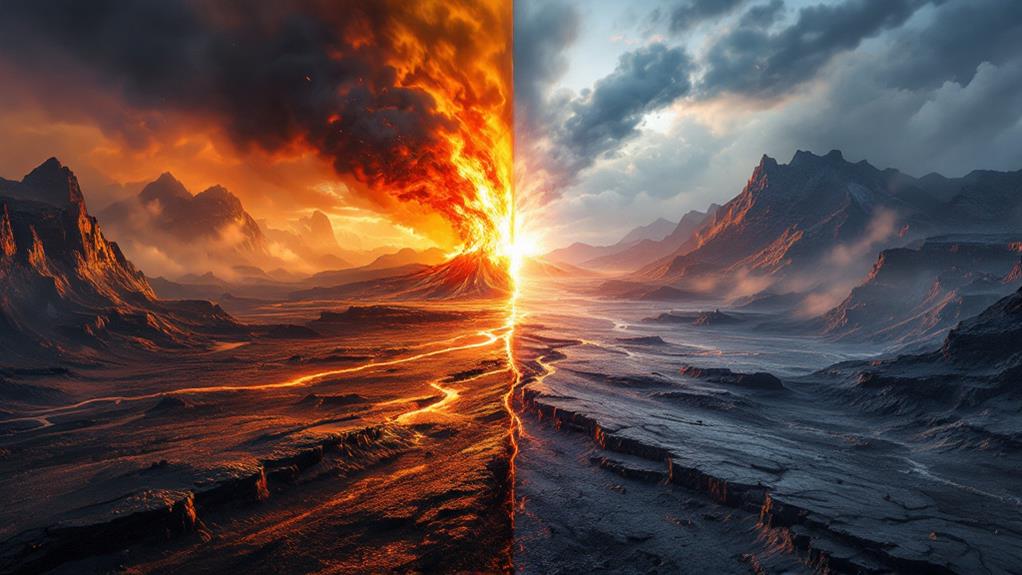
The clash between catastrophism and uniformitarianism marked a vital moment in geological thought. You'll find that catastrophism, championed by Georges Cuvier, proposed that Earth's features were shaped by sudden, violent events. This theory aligned with religious beliefs about divine interventions and global floods.
On the other hand, James Hutton and Charles Lyell introduced uniformitarianism, arguing that the same geologic processes we observe today have been operating consistently throughout Earth's history. They believed that gradual changes over vast periods could explain the planet's current state.
This debate transformed how scientists approached Earth's history. Uniformitarianism emphasized the importance of studying present-day erosional patterns and other ongoing processes to understand the past. It introduced the concept of deep time, suggesting that Earth was much older than previously thought.
While catastrophism initially held sway, uniformitarianism eventually became the dominant model in geology. Today, geologists recognize that both gradual changes and catastrophic events have played roles in shaping Earth's surface. This understanding has led to a more refined view of our planet's versatile history.
Stratigraphy and Fossil Records
In light of the uniformitarian approach, stratigraphy and fossil records emerged as crucial tools for comprehending Earth's history. You'll find that stratigraphy, the study of rock layers, reveals the Earth's past through sediment deposition patterns. By examining these layers, you can piece together a timeline of geological events and changes in the planet's environment.
Fossil records complement stratigraphy by providing evidence of life forms that existed in different eras. The distribution of fossilized organisms within rock layers offers meaningful insights into past ecosystems and evolutionary patterns. Together, stratigraphy and fossil records allow you to reconstruct ancient landscapes and climates.
To better understand the importance of these tools, consider their applications:
- Dating rock formations and determining their relative ages
- Identifying periods of environmental change, such as ice ages or mass extinctions
- Tracing the evolution of species over time
The Discovery of Deep Time

Throughout the 18th and 19th centuries, geologists grappled with a revolutionary concept: deep time. You might imagine their astonishment as they began to realize that Earth's history stretched far beyond human comprehension. This revelation challenged long-held beliefs about the planet's age and formation.
As you inspect this momentous moment in geological history, you'll uncover how scientists gradually pieced together evidence of Earth's antiquity. They observed rock layers, studied fossils, and examined erosion patterns, all pointing to a much older Earth than previously thought. James Hutton's theory of uniformitarianism played an essential role, suggesting that geological processes occur gradually over vast periods.
The development of geological time scales marked a significant breakthrough in understanding Earth's history. You'll find that these scales divided Earth's past into distinct eras, periods, and epochs, providing a structure for studying geological events. Later, the introduction of radiometric dating techniques in the 20th century allowed scientists to assign precise ages to rocks and minerals, further refining our understanding of deep time and revolutionizing the field of geology.
Plate Tectonics Revolution
During the mid-20th century, you'd witness another model/framework/approach shift in geology: the plate tectonics revolution. This groundbreaking theory explained Earth's dynamic surface and its geological processes. It proposed that the Earth's lithosphere is divided into several large plates that move relative to each other, driven by mantle convection.
The plate tectonics revolution was built on several key discoveries:
- Continental drift theory by Alfred Wegener in 1912
- Seafloor spreading hypothesis by Harry Hess in 1960
- Paleomagnetism studies confirming plate movement
You'd see how these ideas converged to form the unified theory of plate tectonics. This new viewpoint explained various geological phenomena, including the formation of mountains, earthquakes, and volcanoes. It also provided understandings into the distribution of fossils and the evolution of life on Earth.
The concept of seafloor spreading became a cornerstone of plate tectonics. It explained how new oceanic crust is created at mid-ocean ridges and spreads outward, eventually subducting beneath continental plates. This process, driven by mantle convection, became the mechanism for plate movement and the recycling of Earth's crust.
Modern Geological Technologies
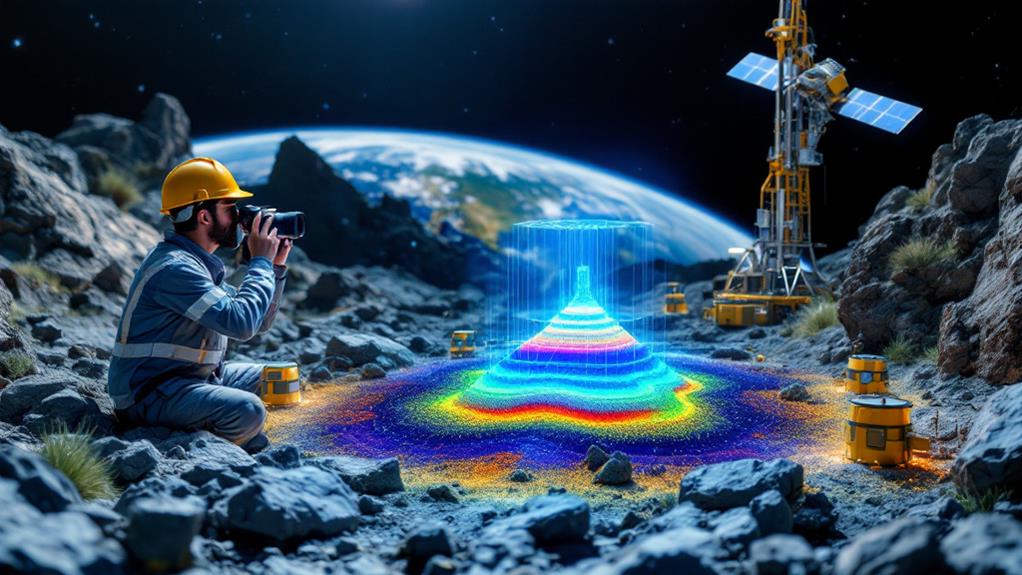
Modern geological technologies have revolutionized the way you study and understand Earth's processes. You now have access to advanced tools that allow you to investigate the planet's surface and interior with unparalleled accuracy. Remote sensing techniques, such as satellite imaging and LiDAR, enable you to map and analyze large areas of land without setting foot on them. These methods provide detailed information about topography, vegetation, and even subsurface structures.
3D geological modeling has changed how you visualize and interpret complex geological formations. You can now create detailed digital representations of underground structures, helping you better understand resource distribution and potential hazards. Geophysical instruments like ground-penetrating radar and seismic imaging allow you to peer beneath the Earth's surface, revealing hidden features and processes.
Advanced computer simulations and data analysis techniques have enhanced your ability to predict geological events and assess risks. You can now model everything from earthquakes to volcanic eruptions with greater precision. These modern technologies have not only expanded your knowledge of Earth's history but also improved your capacity to manage natural resources and mitigate geological hazards.

